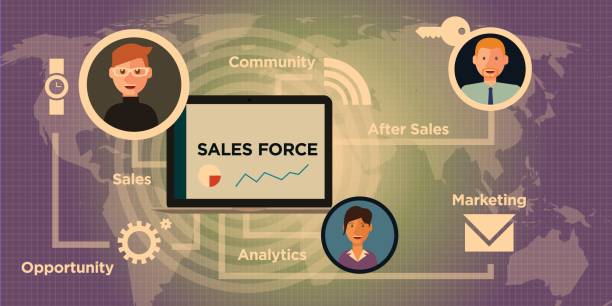Salesforce is a powerful CRM tool, but it’s not without its challenges. One of the biggest challenges is data migration. Migrating data from one Salesforce instance to another (or from another CRM tool into Salesforce) can be a complex and time-consuming process.
However, with careful planning and execution, you can successfully migrate your data with minimal disruption to your business.
In this article, we’ll walk you through seven steps to take before, during, and after your Salesforce data migration.
1. Plan Your Data Migration Strategy
The first step in any successful data migration is to develop a clear plan. This plan should include an inventory of the data you need to migrate, where it’s currently located, and where it needs to go in Salesforce.
You should also decide which data migration tool you’ll use. There are a variety of tools available, both from Salesforce and third-party providers.
Consider your specific needs when choosing a tool. For example, if you’re migrating large amounts of data, you’ll need a tool that can handle batch data loads.
Once you’ve chosen a tool, make sure to test it thoroughly before using it for your live data migration.
2. Prepare Your Data
Once you have a plan in place, it’s time to start preparing your data for migration. This step can be broken down into three sub-steps:
Export your data: Depending on the tool you’re using, you may be able to export your data directly from Salesforce. If not, you can use the Salesforce Data Export Service to export your data into CSV files.
Clean your data: It’s important to take some time to clean your data before migrating it. This will help ensure that only accurate and up-to-date data is migrated.
To do this, you’ll need to remove any duplicates, check for invalid data (such as incorrect phone numbers or email addresses), and ensure that all required fields are populated.
You should also take this opportunity to standardize your data. For example, if you have multiple columns for phone numbers (home, work, mobile), you should consolidate these into a single column.
Prepare your data for Salesforce: Once your data is clean and standardized, you’ll need to prepare it for import into Salesforce. This may involve reformatting some fields (such as dates or currencies), and adding columns for required fields that are not populated in your source data.
3. Configure Your Salesforce Org
Before you can start migrating your data, you’ll need to configure your target Salesforce org. This includes setting up users, profiles, roles, and permissions.
You should also take this opportunity to configure any customizations or third-party applications that you plan to use in Salesforce.
4. Perform the Data Migration
Once your data is prepared and your target org is configured, you’re ready to start migrating your data.
Depending on the tool you’re using, this process may be automated or manual.
If you’re performing manual data migration, you’ll need to use the Salesforce Import Wizard to import your data into Salesforce.
The Import Wizard will guide you through the process of choosing which objects to import, mapping fields, and scheduling your imports.
5. Verify Your Data
Once your data has been migrated, it’s important to verify that all of your data was imported correctly.
To do this, you can compare your source data (the CSV files you exported in Step 2) to your target data (the data in Salesforce).
You can also salesforce Reports and Dashboards to check for data integrity issues.
6. Clean Up Your Data
Once you’re confident that your data has been migrated correctly, you can start the cleanup. This includes deleting any leftover data in your source system and removing any unused fields or objects in Salesforce.
7. Train Your Users
The final step in any data migration is to train your users on the new system. This includes showing them how to use the new features and functionality in Salesforce and helping them understand any changes to their workflow.
If you follow these seven steps, you’ll be well on your way to a successful Salesforce data migration.
Conclusion:
A data migration is a complex process, but if you plan and prepare carefully, you can ensure a successful migration.
Make sure to choose the right tool for your needs, export and clean your data, configure your target org, and train your users on the new system. With careful planning and execution, you can migrate your data to Salesforce with confidence.

